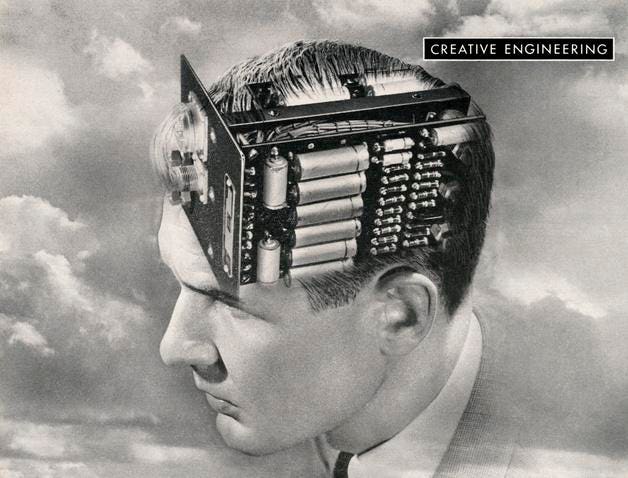
(Illustration by GraphicaArtis/Getty Images)
Getty Images
AI has always lived in abstractions: datasets and benchmarks, algorithms. Researchers spoke theory, CEOs speak disruption. However, AI has insinuated itself underground in 2025, hardwired into infrastructure and logistics and healthcare and even the way citizens interact with their government institutions.
Yet for all this reach, its most striking quality is how rarely we notice it. The real breakthroughs are invisible efficiencies, humming quietly in the background, shaping outcomes without fanfare. It is blending into systems we assume are just “working,” masking the fact that an algorithm is pulling levers behind the scenes.
For instance, consider Tokyo farmers who no longer do anything less than operating harvesting robots with AI-powered tools from a distance from strawberry paddocks nearly 400 kilometers away. These systems don’t merely perform manual labor: they also make recommendations regarding farming techniques, and with this guidance, farmers are making decisions once determined by a lifetime of hands-on knowledge. For many in Japan’s agricultural sector, AI is not a buzzword—it is a lifeline in the face of severe labor shortages caused by a shrinking, aging workforce and the growing pressures of climate volatility.
Plant farming presents certain challenges to automation. Tasks such as harvesting, pruning and sprinkling of pesticides often demand sophisticated, situational judgement that has continued to elude standard machines. To come up with a solution to this challenge, NTT scientists developed a remote harvesting system and an operator at Tokyo tele-operated a robot at a strawberry farm at Akita Prefecture. A video from a camera mounted on the robot is transmitted through a network to an image-processing server with an AI model integrated, and individual strawberries are viewed and determined as to whether they could be harvested.
“Agricultural AI is not expected to displace farmers. Rather, we regard AI-powered robots as highly effective tools that is enhancing producers’ productivity,” Tomoya Hatano, Senior Research Engineer at NTT, told me. “Advanced and high-speed operations that have traditionally been confined to facilities possessing specialized expertise, extensive labor resources, or high-performance equipment will be able to be initiated with minimal manpower or equipment. This process is anticipated to democratize AI-based control, serving as a catalyst for innovation across a wide range of domains.”
Everyday Efficiencies Driving Business and Consumer Experiences
AI today is no longer limited to detection and analysis. It is reshaping industries as varied as retail and high-performance computing. Retail, in particular, is often cited as one of the sectors most poised for disruption, driven by the rise of spatial AI: a convergence of artificial intelligence and geospatial technology that enables machines to perceive and interact with the physical world in three dimensions.
Unlike digital-first industries, retail generates vast volumes of physical data, and much of this information is highly complex and challenging to optimize with traditional tools. Spatial AI technologies present an effort at providing a solution through the embedding of supervised, unsupervised, and reinforcement learning techniques. In practice, this means more sophisticated systems that can map environments, interpret human behavior, and adapt in real time, optimizing operations and making customer encounters more efficient.
Augmodo, a Seattle-based startup founded by Ross Finman, an alum of Niantic Labs, is reimagining inventory visibility with its SmartBadge: a lightweight wearable that passively scans shelves and flags stockouts as store associates walk their usual routes. Powered by a spatial AI assistant, the badge captures high-frequency, passive data during routine activity, generating live 3D store maps and real-time recommendations for restocking, inventory management and compliance. Associates receive AI-driven guidance to streamline daily work, while retail leaders gain remote visibility into conditions and trends across multiple locations, replacing outdated reporting cycles with instant, actionable insights.
“Just as AI is changing knowledge work, Spatial AI is going to change physical work, and retail has the largest physical workforce, with the largest physical data problems, in an environment where everything is monetizable,” Ross Finman, founder and CEO at Augmodo, told me. “We’ve seen results that are 2x better than manual scans, sometimes more.”
Competing solutions like Retail Insight or shelf-scanning robots focus on markdowns, loss reduction and fixed analytics. They often demand heavy hardware investments, rely on scheduled reporting and deliver aggregated rather than real-time data. While effective for reducing waste and improving pricing, they lack the responsiveness and flexibility of Augmodo’s continuous, store-wide spatial intelligence platform.
In a pilot with Australia’s Chemist Warehouse, the chain reduced stockouts, improved labor efficiency, and was impressed enough to invest in the company. Backed by a recent $37.5 million Series A funding, Augmodo is now expanding its reach across industries and geographies, positioning spatial AI as a cornerstone of the next retail revolution.
“AI is everywhere, but what is different now with Spatial AI is the practical applications. It is more grounded,” said Finman. “The differentiator for Augmodo is to take the sales friction for retailers and move them into tech challenges. There is not a huge expense upfront, store setup is quick – 20 minutes or less, no training or change management. We are not trying to replace people, but make them more valuable.”
Likewise, AI models, when paired with next-generation technologies like quantum computing, are set to transform how we solve some of the world’s hardest problems. UK-based Riverlane is bridging AI and quantum computing with its quantum error correction (QEC) stack, Deltaflow. Quantum hardware today is notoriously unstable, with fragile qubits prone to rapid data loss. Deltaflow solves this by enabling quantum machines to perform millions of error-free operations, an essential step toward making complex AI algorithms viable at scale.
At its core, Deltaflow uses an AI-powered decoding layer to identify and correct quantum errors across any hardware platform. This design lays the foundation for hybrid quantum-classical AI. Classical AI systems can preprocess and optimize problems, quantum hardware can interrogate them more stably with error correction, and AI can then govern the course of quantum systems’ evolution and adaptation. Quantum AI could accelerate the process of developing drugs, revolutionize the process of optimizing logistics, and unlock new materials for industries from energy to aeronautics.
“When it comes to applying AI to areas such as drug discovery or the search for new materials, there is a huge lack of data, and generating new data is extremely expensive and time-consuming. This limits the ability to train new models for drug discovery and the development of new materials,” Steve Brierley, CEO and co-founder of Riverlane, told me. Quantum computers allow us to control the building blocks of nature on a computer to generate new data for AI models.
Brierley believes that the future lies in hybrid systems, where the right part of a computation is matched with the right type of processor. Consumers, he noted, will ultimately feel the benefits of this shift in their everyday lives. But they are unlikely to realize they’re interacting with a quantum computer, since the technology will operate behind the scenes in the cloud, an invisible engine quietly powering a new wave of improvements.
“We have only just begun to imagine the ways quantum computing will transform many industries and the services people receive,” he said. “I see quantum computing radically expanding the domains that AI can solve.”
The Shifting Balance of Power in the AI Economy
Not all of AI’s impacts are evenly shared. MIT’s latest GenAI Divide report finds that 95% of enterprise AI pilots are failing to accelerate revenue. Likewise, another study by digital engineering firm Solvd reveals that just over half of executives (53%) are extremely concerned about the prospect of a global recession in the next year. Only half say their fears are driving spending increases with AI, while 36% admit they will retreat if a recession materializes.
Most leaders continue to view AI adoption as a cost-reduction initiative. But Solvd CEO Adam Gabrault believes that the deeper and often unrealized reward comes from the manner in which AI helps redesign processes, unlock possibilities, and cushion against an uncertain future.
“The 95% failure rate reflects companies chasing ‘random acts of AI,’ where they’re checking a box instead of tying efforts to business outcomes. The 5% that succeed treat AI as a long-term capability with broader executive alignment, not a side project,” Gabrault told me. “Treating AI purely as a cost-cutting tool misses the big opportunities. AI can only multiply what you already have, which means you need to have the right people and keep investing in those people.”
He added that companies embracing AI holistically align their executive teams, invest in responsible AI, and build roadmaps tied to their North Star. That’s what allows pilots to scale into real commercial impact. While he acknowledges pressure to chase near-term ROI through packaged solutions and quick wins, he cautions that this approach plateaus. Underexplored use cases, according to the study, include improved strategic forecasting and insights, stronger customer service, faster and more targeted hiring, and better use of data.
“When AI is approached as a means to amplify the strengths that already exist, it’s more empowering for everyone involved, and doesn’t feel like a race to reduce headcount and cut costs,” said Gabrault.
AI is neither the savior its boosters imagine nor the threat its critics warn against. It is, instead, a pervasive force reshaping systems and behaviors, often quietly beneath the surface. The central question is no longer “what will AI do?” but “what is AI already doing, and is this the future we want to live in?”

